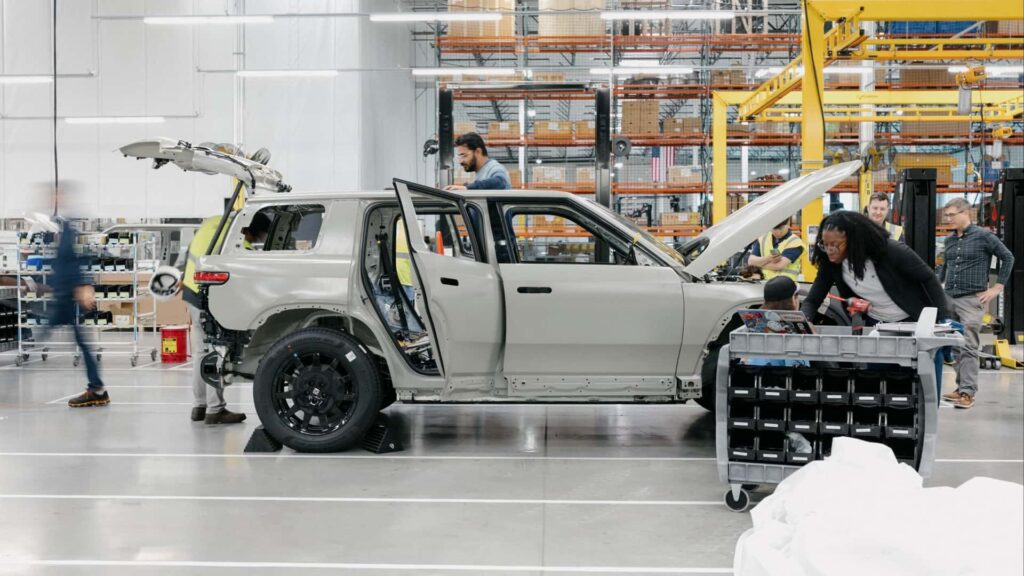- Rivian’s cost-cutting ideas for the R2 include slashing miles of internal wiring compared to the R1.
- The drive unit was designed to have as few parts as possible.
- The inverter, for instance, integrates the drive unit mount.
Profitability. It’s what makes or breaks car startups, and Rivian is no stranger to this concept. The maker of the excellent R1S and R1T EVs turned a gross profit for the second quarter in a row at the beginning of this year, but that’s not enough.
Here’s where the upcoming R2 SUV comes into play. It’s slated to go on sale in the Untied States the first half of next year with a starting price of around $45,000, positioning it in the highly competitive electric mid-size crossover segment that’s currently ruled by the Tesla Model Y.
So, how do you make a profitable and enjoyable electric SUV without sacrificing driveability?
Rivian R2 Live Impressions New York City
The short answer is: through clever solutions that minimize production costs while maximizing profit margins. Probably the best graphic representation of how Rivian wants to achieve this is embedded below. The photo was posted on X by the startup’s founder and CEO, RJ Scaringe, and it shows the difference between the body wiring harness of the upcoming R2 and the current, updated R1 models.
According to Rivian, the R2’s harness is 44 pounds (20 kilograms) lighter and uses 2.3 miles fewer wires, as well as 60% fewer in-line connectors. The front section harness is a huge departure from what’s currently being used, and it’s worth mentioning that the California-based EV maker already overhauled the R1’s wiring harness by cutting 1.6 miles for the refreshed version.
In the R2, the number of Electronic Control Units (ECUs) will also go down from 17 to just seven, further streamlining the assembly process.
But that’s not all. In other social media posts, Scaringe boasted how the R2’s electric motor inverter uses 41% fewer parts than the Enduro drive unit that’s used on the R1S and R1T. Clever solutions like integrating the drive unit mount into the inverter lid, as well as using the inverter chassis to close out the oil cooling path, also contribute to the overall cost savings effort.
When it comes to the body of the R2, Rivian will use large high-pressure die castings for the SUV’s structure, which is similar to what Tesla has been using for years through its megacasting technology.
According to Scaringe, the R2 will have just three castings in the rear, whereas the R1 has roughly 50 stampings and over 300 joints. This makes production and assembly much simpler, but it might prove problematic when crash repairs will need to be performed.
Rivian has already started assembling validation units at “pilot scale” using “mostly production tooling,” the company said in its letter to shareholders earlier this month. The California startup sold 51,579 vehicles last year, including the R1S, R1T, and Commercial Van. This year, however, the EV maker saw a sales slump in the first quarter, both year-over-year and quarter-over-quarter, with a total of 8,640 EVs delivered.
That’s decent for a startup. To play in the big league, however, Rivian needs to sell many more cars, and the R2 is expected to do just that. The company’s current factory in Normal, Illinois, is being upgraded to be capable of assembling up to 155,000 vehicles per year, while Rivian’s new factory in Georgia will have an output of 400,000 vehicles per year when fully operational.
